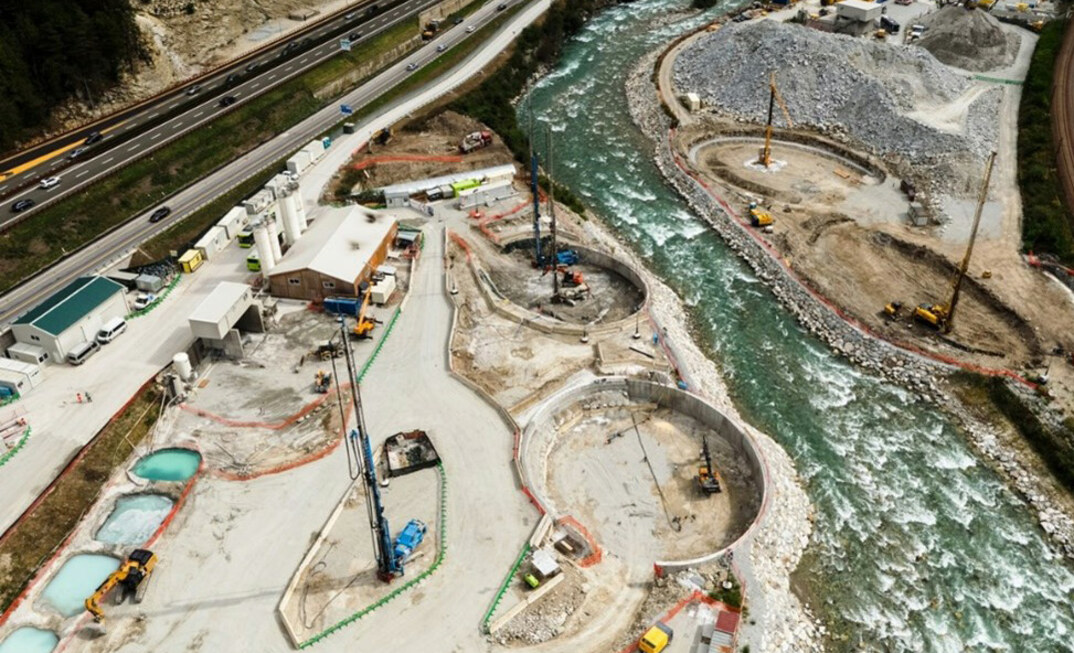The Brenner Base Tunnel (BBT) is the main segment of a new railway line that will connect Munich with Verona. BBT runs between Innsbruck in Austria and Fortezza in Italy. The new tunnel will lead to an improvement for, above all, the truck traffic through the so-called Brenner Pass. The two-tube tunnel system will be 55km long, making it the longest underground railway stretch in the world.
Stabilisation of the ground
The excavation of the tunnel started from four shafts on the riverbanks, two on each side. Before the excavation of the shafts could start ground improvement by jet-grouting was needed. The jet-grouting was to be performed both to stabilise and to seal off the water in the shaft, as well as to improve the ground from the surface before excavating the tunnels.
LKAB Wassara's W120 water-powered hammer with a Ø152mm drill bit was used to make columns up to 40m in one single pass.
Above the W120 hammer a monitor was mounted, which worked both as a nozzle holder for the jet grouting and a flow diverter that diverts water from the water channel in the drill pipe to the hammer. The monitor is of a double-flow type where compressed air is used to improve the performance of the jet grouting. The water, air, and jet grout are supplied through a 127mm triple wall drill tube securing that the fluids are not mixed.
Water-powered drilling
Rotary drilling is normally used when jet grouting but was discarded due to the complicated soil conditions with frequent boulders and large blocks found on this jobsite. In its place, water-power drilling solved the problem of drilling through the blocks and boulders.
In a comparison test at the beginning of the project, Wassara's water-powered hammer outperformed a pneumatic DTH hammer, drilling more than twice as fast as the pneumatic hammer. A 36m deep hole was drilled with the two different techniques. The Wassara hammer drilled the 36m in 40 minutes while the pneumatic DTH hammer took 1-1/2 hours to reach the same depth. Each rig could now produce seven to eight columns per day during each 24-hour operation. The low performance of the air hammer was most likely caused by the high water table.
Got a story? Email: duncan.moore@aspermont.com



















